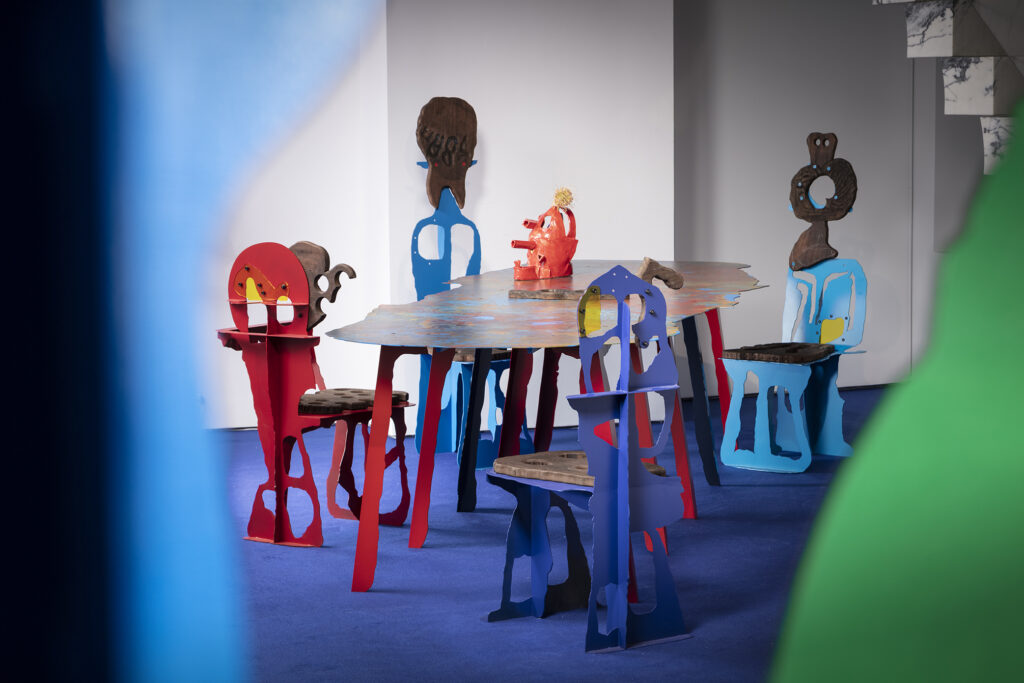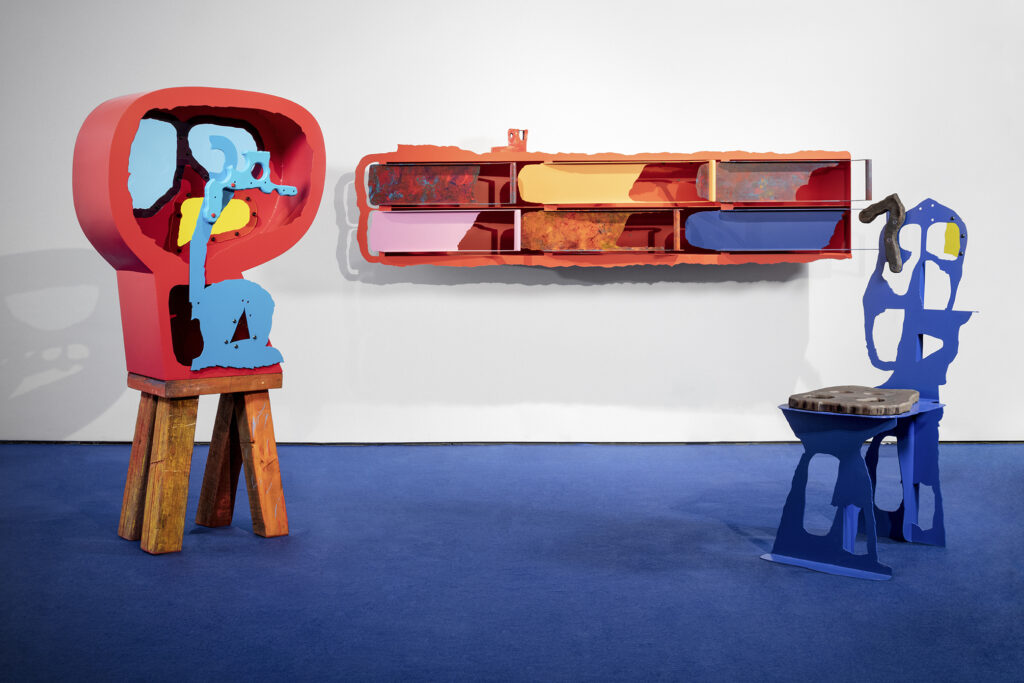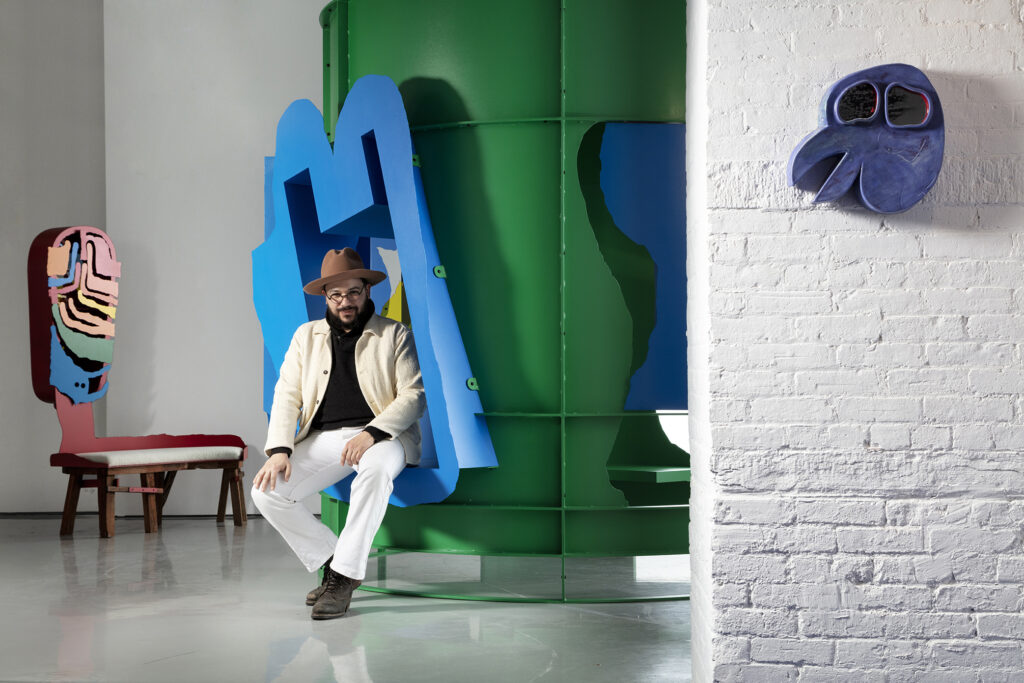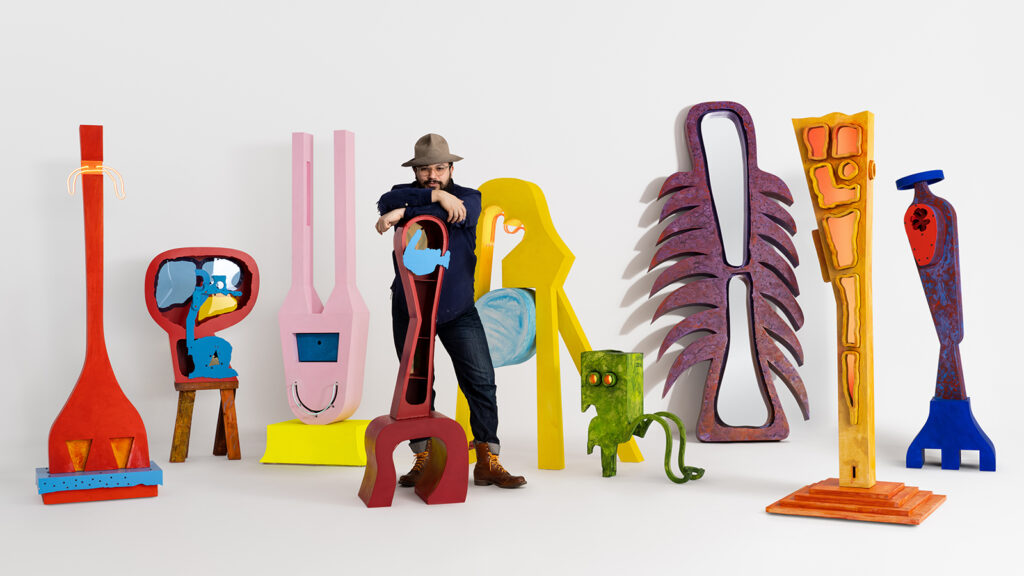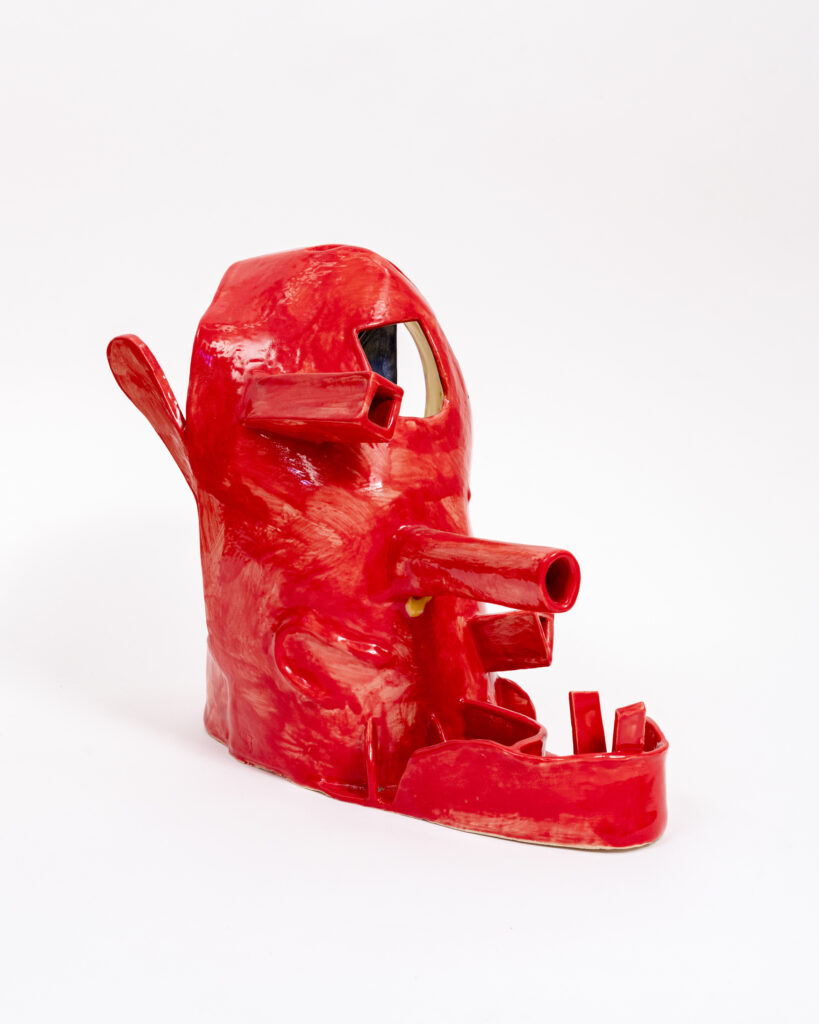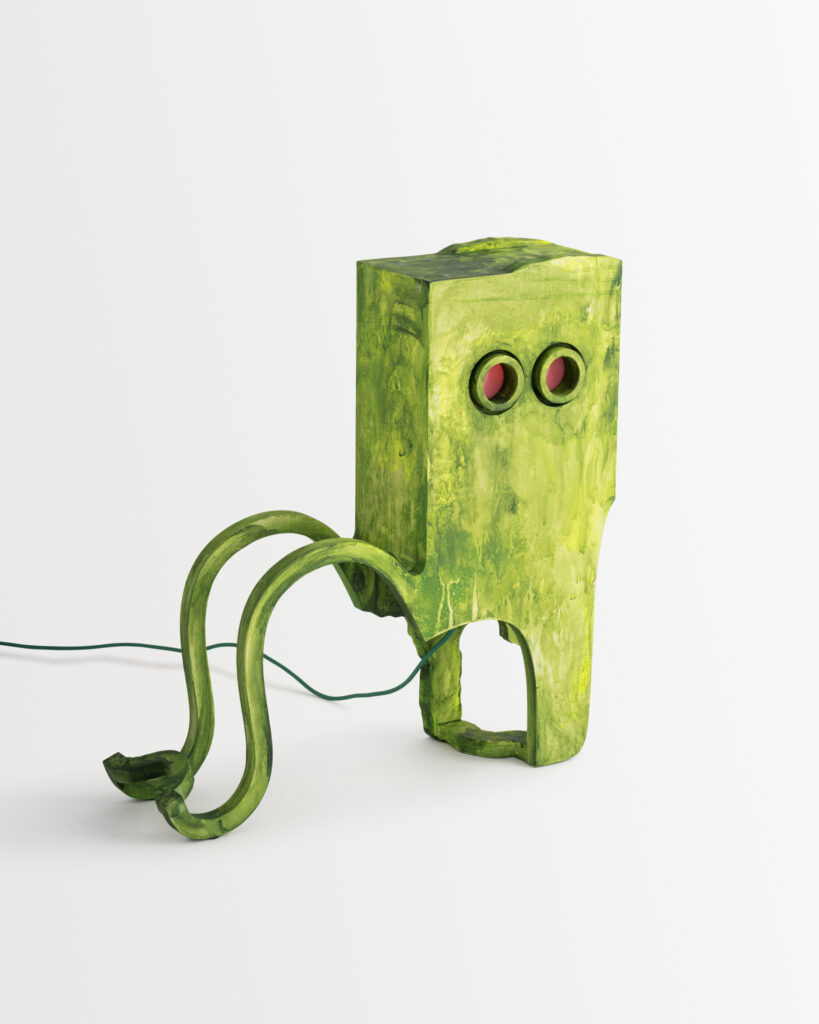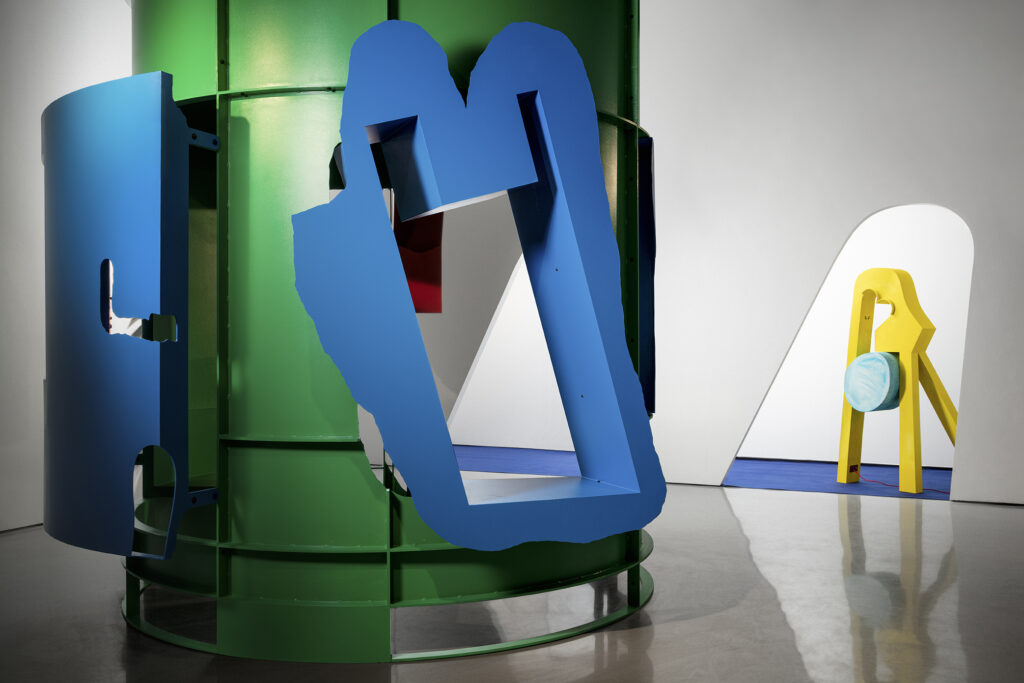
When we think of freehand drawings, we tend to imagine sketches and graffiti, quickly made, free strokes, two-dimensional images. Now, think about drawings as three-dimensional, functional objects – chairs, cabinets, lighting. It sounds almost paradoxical, yet this so accurately defines the work of Romanian-American artist/architect/designer Serban Ionescu. The Brooklyn-based artist has achieved the most articulate and ambitions expression of his art in his first solo show, which opened this week at R & Company. I was there because I discovered his work in my never-ending quest to discover the exciting moments of contemporary design.
Ionescu’s work is rooted in his interest in the world of making and storytelling, and his pieces are somewhat whimsical, somewhat surrealist, somewhat naïve and poetic. The remarkable space of the New-York-based gallery serves as the perfect backdrop for this show. As you walk down the grand marble staircase to the lower portion of the gallery, you see Ionescu’s work shine. The bright, bold colors, the silhouettes with a drawing quality that are unmistakably his. His language is so unique as he creates his own worlds, due to Ionescu’s use of intuition, and because he never uses existing images.
I particularly loved the series of cabinets—colorful creatures crafted in metal, wood, and clay. Each is different, each has its own distinct personality, each was crafted somewhat spontaneously, and as a group, they look musical, and alive, like aliens from another planet wandering about this new world, created by the artist. Some are energized by neon lights; others by shiny plexiglass features. The viewer walks among them, in this unfamiliar world, as if stepping into a children’s science fiction film, set in the 22nd century. The aesthetic phenomena and the extreme colors bring a spectacular energy to the space and to the experience, calling to mind the stories of the creation of the world.
The title of the show, ‘Castle Garden,’ is both historical and personal. Named after the first immigration station in the United States, founded in the 19th century to process immigrants. The State of New York’s Board of Emigration Commissioners established the Emigrant Landing Depot at Castle Garden in 1855. All that remains today are its original brownstone walls. Just as Castle Garden’s functions changed over time, the functionality of Ionescu’s objects is variable, transforming based on the viewer’s desires and the location of the works. Symbolically, this infamous New York spot relates to his own life. As a young immigrant, he arrived in New York from Communist Romania at the age of ten. The fresh view, the new landscape of a new homeland is something experienced by immigrants, and he remembers being overwhelmed by the color and abundance of his adopted country while continuing to use drawing to communicate before he learned English.
The centerpiece of this show is an enormous, 22-foot-tall ‘Tower for an Hour,’ a metal functional sculpture in green, blue, and red, commissioned for the back garden of a New York City townhouse, and fits in the space as if it were site-specific. It is called a ‘folly,’ constructed traditionally to decorate 18th-century English gardens, meant for reflection, rest, and play in the Romantic world. Ionescu’s training as an architect is evidenced in his large-scale garden structure.
The question that hovers overhead is ‘what is next?’ for this talented artist—a master at creating new worlds.


